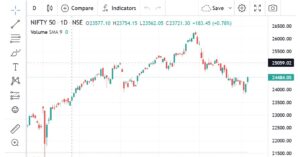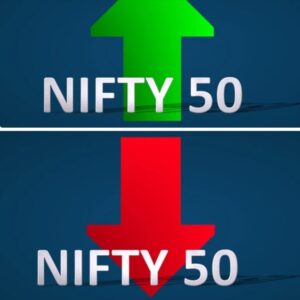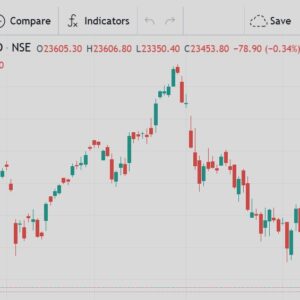Nifty and Bank Nifty Index Market Prediction: 7th November 2024

For November 7, 2024, the Indian stock market, represented by the Nifty and Bank Nifty indices, is set to showcase significant market movements. These indices reflect both the economy’s performance and investor sentiment, and for those actively trading or invested in the Indian market, understanding the potential trajectories of these indices can provide critical insight.
In this article, we analyze the likely trends for Nifty and Bank Nifty for November 7, 2024, based on technical indicators, economic data, and global cues. We aim to deliver a comprehensive outlook to aid informed trading decisions, whether short-term or long-term.
Understanding Nifty and Bank Nifty
What is Nifty?
The Nifty 50, often simply called Nifty, is a benchmark index representing the weighted average of 50 of the largest and most liquid companies listed on the National Stock Exchange (NSE). This index captures various sectors, reflecting the overall health and sentiment in the market.
What is Bank Nifty?
Bank Nifty, or the Nifty Bank Index, is a sectoral index focusing solely on banking stocks, comprising 12 prominent banks listed on the NSE. Given the banking sector’s significant influence on the Indian economy, the performance of Bank Nifty is closely watched, particularly by those interested in the financial sector.
Market Sentiment and Key Factors Impacting Nifty and Bank Nifty
1. Global Market Influences
Global market trends are often the first indicators that impact Nifty and Bank Nifty. For example, U.S. Federal Reserve decisions, especially concerning interest rates, can influence market sentiment, as higher U.S. rates may pull foreign investments out of emerging markets like India. Furthermore, other global markets, including Europe and Asia, affect how Nifty and Bank Nifty perform, as changes in these regions often impact investor sentiment.
2. Domestic Economic Indicators
Economic factors, such as inflation rates, GDP growth, and currency strength (USD/INR exchange rate), play a major role. A stronger rupee or lower inflation can boost market confidence, while a weak currency or high inflation tends to dampen it.
3. Fiscal and Monetary Policies
Policies from the Reserve Bank of India (RBI), particularly decisions regarding interest rates, affect Bank Nifty. If the RBI hints at or implements an interest rate cut, this usually provides a positive boost to Bank Nifty. The government’s fiscal policies, including initiatives like capital investments and reforms, can also impact the market significantly.
Technical Analysis for Nifty on November 7, 2024
1. Support and Resistance Levels
- Support Levels: Nifty has strong support levels around 24000 and 24100. If the index remains above these levels, it is likely to experience stable upward movement.
- Resistance Levels: The primary resistance levels are around 24700 and 25,000. A breakout above these levels could set the stage for further gains, while resistance here may lead to a consolidation or short-term pullback.
2. Moving Averages
- 50-Day and 200-Day Moving Averages: These are key indicators of the long-term trend. If Nifty trades above both its 50-day and 200-day moving averages, this suggests an ongoing bullish trend. Traders will be watching these levels to assess whether the upward momentum can be sustained.
3. Momentum Indicators
- Relative Strength Index (RSI): RSI is an effective momentum indicator. An RSI above 70 would indicate that Nifty is potentially overbought, suggesting a possible correction. If the RSI is around 30, the market might be oversold, and a reversal could be imminent.
- MACD (Moving Average Convergence Divergence): Positive MACD values could signal sustained upward momentum, while negative values might indicate the potential for a downturn.
Technical Analysis for Bank Nifty on November 7, 2024
1. Support and Resistance Levels
- Support Levels: Bank Nifty has shown support around 51500 and 52000. Should the index remain above these levels, it could stabilize and potentially initiate an upward trend.
- Resistance Levels: Key resistance for Bank Nifty is located around 52,500 and 53000. A breakout above this level could lead to significant gains, especially if the broader market sentiment is positive.
2. Interest Rate Sensitivity
- Impact of RBI Announcements: Bank Nifty, being composed of banking stocks, is highly sensitive to interest rate announcements. If the RBI maintains a dovish stance or announces rate cuts, banking stocks could benefit from increased lending activity, providing a potential boost to Bank Nifty.
3. Sector-Specific Performance
- The performance of major banking stocks like HDFC Bank, ICICI Bank, and State Bank of India (SBI) heavily influences Bank Nifty. Watching these individual stocks can provide insights into the broader trend, as their weightage significantly impacts the Bank Nifty index.
Additional Market Influencers for November 7, 2024
1. FII and DII Activity
- Foreign Institutional Investors (FII) and Domestic Institutional Investors (DII) play a crucial role in market direction. If FIIs increase their buying activity, Nifty and Bank Nifty could see upward momentum. Conversely, heavy FII outflows may put downward pressure on these indices.
2. Corporate Earnings Announcements
- Earnings reports from key companies within the Nifty 50 can influence the index’s performance. Positive results can boost market sentiment, while disappointing earnings may lead to a correction.
3. Volatility Index (VIX)
- India VIX, often called the fear index, reflects market volatility expectations. A rising VIX often indicates increased uncertainty, which can lead to a sell-off or correction. Conversely, a declining VIX suggests market stability, likely leading to steady gains in Nifty and Bank Nifty.
4. Crude Oil Prices and Currency Exchange Rates
- Crude oil prices affect sectors like energy, manufacturing, and transport, influencing the overall market. Rising crude prices typically strain the economy, impacting indices. Likewise, the USD/INR exchange rate can affect sectors dependent on imports or exports, indirectly impacting Nifty and Bank Nifty.
Predicted Scenarios for Nifty and Bank Nifty on November 7, 2024
Bullish Scenario
- In a bullish environment, if the indices surpass their resistance levels, we could see robust gains across sectors, particularly in banking. Key drivers would be positive global cues, stable economic indicators, and supportive policy announcements. In this case, Nifty could aim for the 25,000 mark, while Bank Nifty may push towards 53,000.
Bearish Scenario
- If global markets turn volatile or domestic economic data disappoints, Nifty and Bank Nifty may face corrections. In a bearish case, Nifty might fall towards the 24000 level, while Bank Nifty could dip below 51,500. A cautious approach would be advisable, especially for short-term traders.
Consolidation Scenario
- In a consolidation phase, Nifty could oscillate between 24000and 24500, while Bank Nifty may range between 51000 and 52800. Investors should watch for breakouts in either direction as potential entry points.
Conclusion
The Nifty and Bank Nifty indices on November 7, 2024, will be influenced by a blend of technical signals, economic indicators, and market sentiment. Investors should keep a close eye on global trends, RBI policies, and corporate earnings, as these factors could trigger significant shifts in both indices. Adopting a flexible strategy—whether bullish, bearish, or neutral—based on market signals and trading with adequate risk management will be essential for successful trading in a dynamic market environment.









